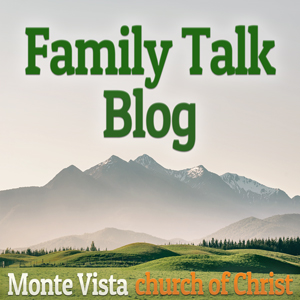The word translated table in the Old Testament, 70 times in the KJV, indicates something spread out to hold the items of a meal. It is used as the table where the family sets for a meal, for the table prepared for a king and his friends, or for friends to discuss refreshment plans. But Exodus 37:10 and Malachi 1:7 & 12 refer to a place prepared for a meal shared between God and His servants. The wood specified was shiṭṭâh / shiṭṭı̂ym (singular and plural spellings) and is today known as acacia trees, and the sticks or branches taken from them. The branches would not produce the large planks of lumber we are used to but would be well suited for the structures covered with gold according to God’s instructions.
Instructions for this unique table were included for placement in the Tabernacle. The craftsmen built the table according to God’s plan, guided by the Holy Spirit. It was made of acacia wood, two cubits long and a cubit wide and one and a half cubits high. The wood provided a framework for the gold overlay and supported the gold top and utensils. A molding and a four-inch-high rim wrapped around it to prevent the items on top from falling off as the table was carried through the wilderness. Rings were placed near the rim at the four corners to hold the poles used to carry the table. Every surface of the table and poles was covered in pure gold, so the wood could not be seen. Often forgotten were the dishes, pans, bowls, and jars used during the priest’s communion with God (Exodus 25:23-29, 37:10-16).
The primary purpose of the table was to hold “the bread of the presence” (literally, “the bread of the face”), which was set before the Ark of the Covenant and the Golden Altar of Incense of Yahweh (Exodus 25:30). Each Sabbath, the priests would replace the twelve loaves from the previous week with freshly baked bread. Along with the bread, pure frankincense was placed with the loaves and used as a memorial offering to the Lord as the priests consumed the bread in the presence of God. This was a covenant between God and the priests to be carried out for as long as the Levitical Priesthood lasted. (Leviticus 24:5–9).
We can see that the bread eaten by the priests is a physical example of the spiritual “Bread of Life” given to Christ’s followers in the “kingdom of priests” (1 Peter 2:9). But the bread offered by Christ is also offered to all people and can lead them to obey and serve Him as well as give sustenance to followers. So, Showbread Is not a direct type of the Word. It is only a type of provisioning God has made for His servants throughout time. He provisioned Noah during the flood, Abraham during his wonderings, the prophets were cared for, and Elijah was even fed by Ravens. And for all humanity, God made provisions for us to be supplied with spiritual food and physical brethren to help us through our journey through time.
But considering the table, what comes to mind when we speak of gathering around our table at home? We are not referring to the table by the door that catches stuff that we do not want to deal with at the time. We think of a place to eat and fellowship with others—a place to gather to commune and break bread together. The table is significant in life as the place where family comes together to eat and share in the day’s events. Around the table, we are a family, bonded together with love and concern for each other. It is a place of safety and stability for family members to rest, grow, and plan for the future.
In the Tabernacle, the Table of Shewbread was the place where the priests, serving the Golden Altar and Lamp Stand, gazed daily on the bread, a reminder of the promise that God would care for their needs. As we will see when we look at the Tabernacles assembly, The Table was placed near three other sacred items, The Ark, The Golden Altar, and The Golden Lampstand. God’s presence is seen in the Mercy Seat on the Ark, The Altar is symbolic of petitions offered to Him, and the Candlestick provided the Light symbolic of His illuminating glory (Exodus 35:12-15). With these objects in close proximity to each other, and God the center of attention in each, the meaning of the Hebrew word Shewbread as “Bread of The Presence” becomes clear. Here is the proof that God is present and provides for His children Israel. We are reminded of a conversation Moses had with God when Moses asked to see God’s glory. God’s reply was “I Myself will make all My goodness pass before you, and will proclaim the name of the LORD before you; and I will be gracious to whom I will be gracious, and will show compassion on whom I will show compassion. But You cannot see My face, for no man can see Me and live” (Exodus 33:18-20). Seeing God is not necessary when we are surrounded by evidence of His love and care.
Today, how does Christ’s church show God’s glory and providence in caring for His children?
